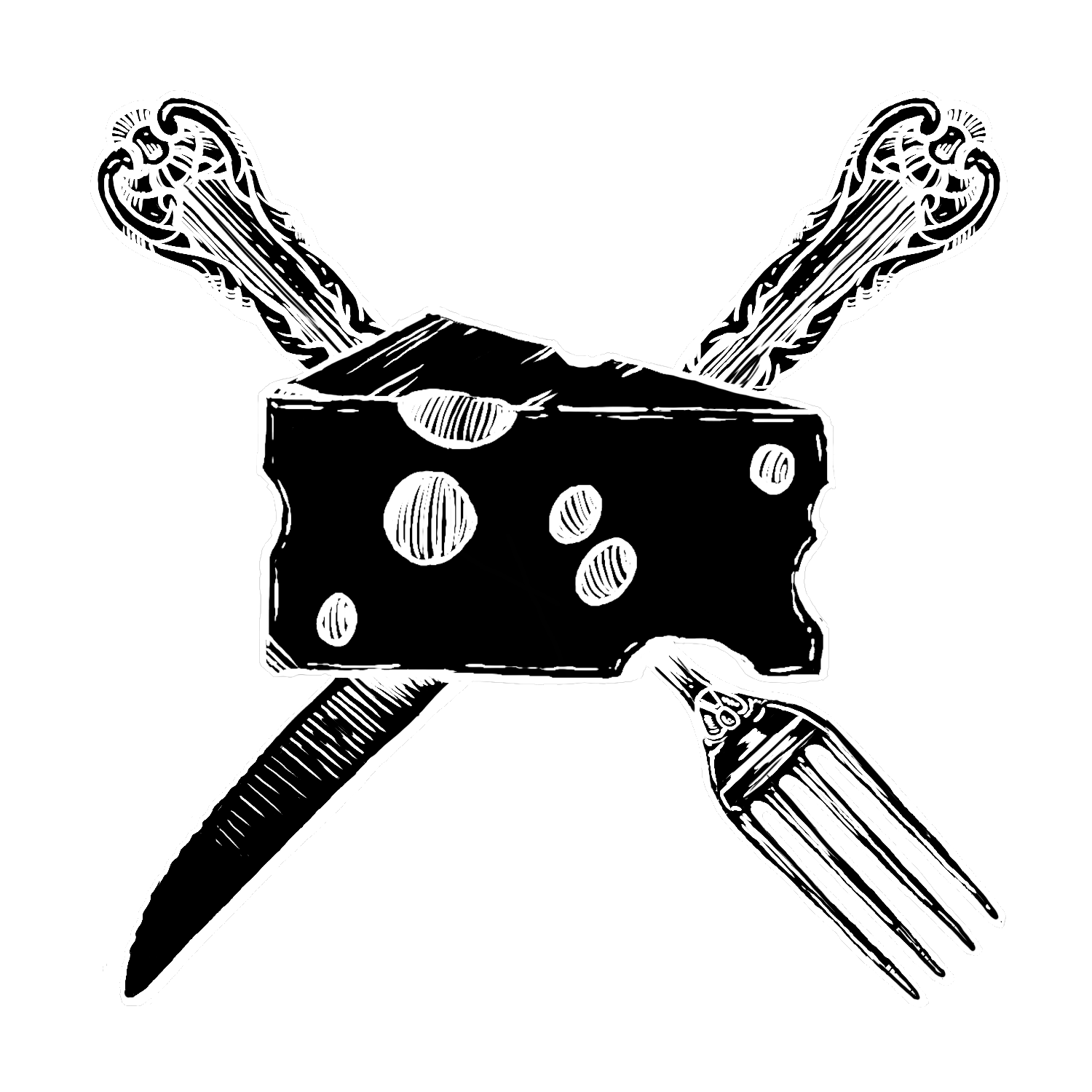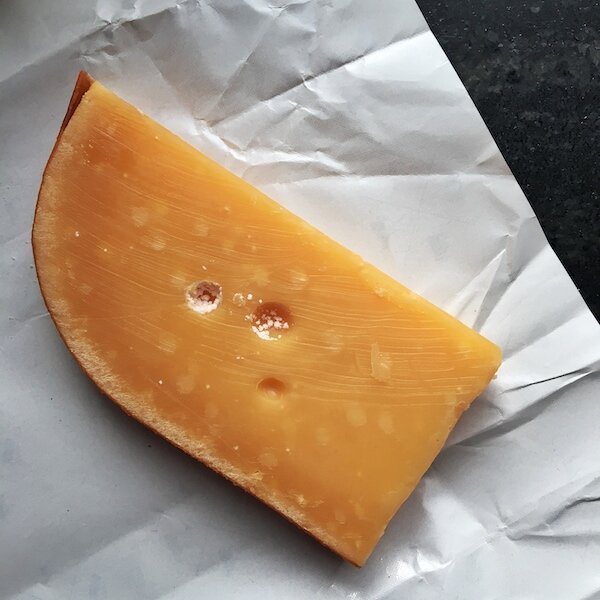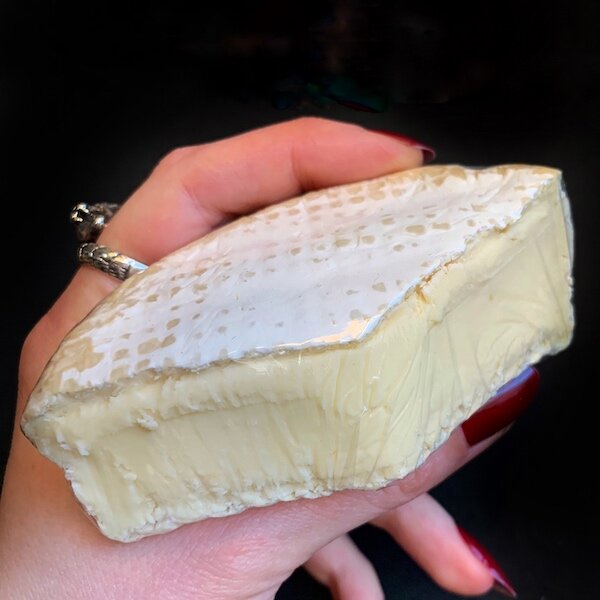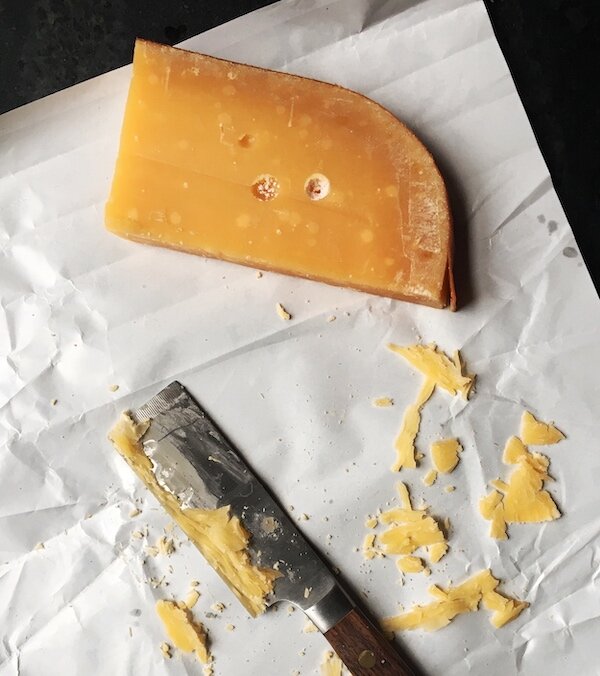How to Store Cheese
And Keep it Fresh AF
Understanding how to store cheese is essential knowledge for all cheese sluts. Those sultry little wedges in your fridge need ample oxygen and humidity, which is why you should never store your cheese in plastic wrap. Proper cheese care is actually very easy. Here’s a guide on how to store your cheese, including a breakdown of the shelf life of cheese.
How to Store Cheese Like a Good Cheese Slut
Cheese is alive and breathing, which means it needs oxygen and humidity to stay fresh and tasty. Now, I know it’s convenient to just keep your cheese in the plastic wrap it came in, but it’s just as easy to take care of it properly. Proper cheese storage is very simple and only takes a few minutes of actual effort. Your cheese will reward you with the sexiest flavor experience possible.
3 REASONS WHY YOU SHOULD NEVER STORE YOUR CHEESE IN PLASTIC WRAP
1. IT SUFFOCATES THE CHEESE
Plastic wrap cuts off the air supply, essentially suffocating your specimen. A suffocated cheese will eventually die, leading to tragic off-flavors and textures that are weird in all the wrong ways.
2. IT TRAPS IN MOISTURE
Cheese needs the right amount of humidity. If there’s too much moisture trapped inside the wrapper, the rind will become slimy, moldy, and the wrong kind of smelly.
3. IT LETS IN LIGHT
Because it’s clear, plastic wrap lets in a lot of light, which can oxidize aged cheeses. This destroys their sexy complexities and leads to a nasty, crayon-like flavor.
How to Keep Your Cheese Fresh AF with Proper Storage
1. IF YOU’RE BUYING CHEESE THAT WAS STORED IN PLASTIC, CHECK THE DATE FIRST.
Of course, a lot of retailers wrap cheese in plastic, both for convenience and to make it easier for consumers to see the cheese they’re considering. While cheese needs oxygen to breathe, it’s very good at holding its breath for short periods of time. Check the date to make sure it’s only been in plastic for (ideally) a week or less. If there’s only a sell-by date, use your best judgment by checking fordiscolored spots on the paste or cracks in the rind.
2. SLIP OFF THAT PLASTIC WRAP AS SOON AS YOU GET HOME
When you get home for the cheese store, slide off that plastic wrap and let your cheese breathe for a few minutes. If the cheese is firm and tastes a little like a refrigerator, take a non-serrated chef’s knife and slightly scrape off that little glossy layer on the paste.
3. WRAP YOUR CHEESE IN SPECIALTY CHEESE PAPER, OR ELSE PARCHMENT PAPER AND A ZIPLOC.
Specialty cheese paper provides airflow and humidity, which keeps your cheese healthy and happy. When you’re tucking it in for storage, make sure not to leave any parts exposed, because the fridge will dry them out and make them crusty. I prefer Formaticum’s cheese paper (see disclaimer at the bottom). Alternatively, wrap the cheese in parchment or butcher paper. Then, loosely wrap it in a Ziploc bag. Before closing the zipper, make sure there’s still some air in the bag so your cheese has plenty of oxygen and humidity.
4. IF YOU FIND MOLD ON YOUR CHEESE, JUST SCRAPE IT OFF.
Remember when I said that cheese was alive? That’s because it’s fermented, so there are all kinds of mold and bacteria crawling all over it. Sometimes the wrong ones hop onto the wrong places, and you’ll start to see white fuzzies on the inside of your cheese. It’s not going to hurt you, so before you toss that wedge, just scrape o that mold and even change the wrapper if you want to be extra careful. The only exception to this rule is fresh cheese: if those get moldy, it’s best to throw them away.
The Shelf Life Of Cheese
Now that you know how to store your cheese, let’s talk about how long it will last. This all depends on the type of cheese as well as the size of the individual piece. The smaller the piece, the faster it will go bad. Keep in mind that a wheel of cheese stops ripening and begins to deteriorate as soon as it’s cut, so it’s best to buy only as much as you need for the week, eat it fast, and then buy more.
Here’s how long each type of cheese typically lasts.
Fresh Cheeses, like ricotta: 1-3 days
Because they’re so fresh, these cheeses are best consumed as soon as possible after opening the package, otherwise they’ll get sour. The exception here is feta stored in a brine, which stays preserved for several months thanks to that salty bath.
Bloomy-Rind Cheeses, like brie: 5-10 days
The ripeness of these cheeses determines their shelf life. Intact wheels of brie will continue to ripen until you cut the rind, a er which it starts to deteriorate. If it’s a young wheel, you might have an extra week. If it’s close to the expiration date, eat it up.
Washed-Rind Cheeses, like Taleggio: 1-2 weeks
The shelf life of stinky washies really depends on how much moisture is in the cheese. Squishy boys, like Époisse, have a lot of moisture, so they’ll go bad more quickly. Firm washies have less, so they’ll last longer.
Aged Cheeses, like Gruyère: 3-6 weeks
The harder the cheese, the more durable it is. I’ve even kept big wedges of Parmigiano in my fridge for a couple of months, and they’ve survived virtually unharmed. Still, their flavors will dull with time, so the sooner you eat them the better. Just check for mold every week or so.
Blue Cheeses, like Stilton: 1-2 weeks
Like the previously mentioned varieties, the shelf life of blue cheese depends on its texture. So ones will last about a week, while firmer ones will keep longer.
DISCLAIMER:
This post was not sponsored by any brand or company, and all opinions expressed herein are my own. I do, however, work as a digital marketing consultant and content creator for Formaticum. I truly believe in their products and highly recommend that everyone try them for all their cheese storage needs. If you click on any of the above links and make a purchase of Formaticum on Amazon, I will get a commission on it. Consider it a donation to the Cheese Church!




